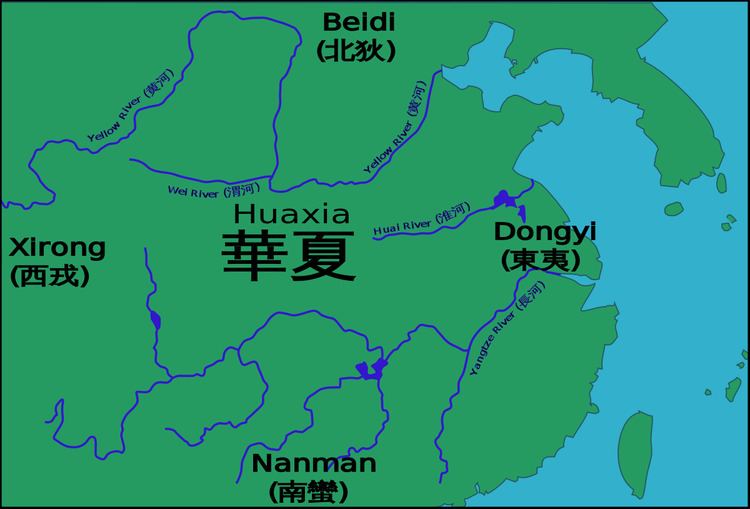 | ||
Xirong (Chinese: 西戎; pinyin: Xīróng; Wade–Giles: Hsi-jung; literally: "Western warlike people") or Rong were various people who lived primarily in and around the extremities of ancient China known as early as the Shang dynasty (1765-1122 BCE). They were typically to the west of the later Zhou state (in modern Gansu, etc.) from the Zhou Dynasty (1046 – 221 BCE) onwards. They were mentioned in some ancient Chinese texts as perhaps related to the people of the Chinese civilization.
Contents
Etymology
The historian Li Feng says that during the Western Zhou period, since the term Rong "warlike foreigners" was "often used in bronze inscriptions to mean 'warfare', it is likely that when a people was called 'Rong' the Zhou considered them as political and military adversaries rather than as cultural and ethnic 'others'."
After the Zhou dynasty, the term usually referred to various peoples in the west during early and late medieval times. Prusek suggests relations between the Rong of Zhou and the Ren (人) tribes known in Shang.
Xirong was also the name of a state during the Spring and Autumn and Warring States periods of Chinese history.
The Xirong together with the eastern Dongyi, northern Beidi, and southern Nanman were collectively called the Siyi 四夷 "Four Barbarians". The Liji "Record of Rites" details ancient stereotypes about them.
The people of those five regions – the Middle states, and the [Rong], [Yi], (and other wild tribes round them) – had all their several natures, which they could not be made to alter. The tribes on the east were called [Yi]. They had their hair unbound, and tattooed their bodies. Some of them ate their food without its being cooked. Those on the south were called Man. They tattooed their foreheads, and had their feet turned in towards each other. Some of them (also) ate their food without its being cooked. Those on the west were called [Rong]. They had their hair unbound, and wore skins. Some of them did not eat grain-food. Those on the north were called [Di]. They wore skins of animals and birds, and dwelt in caves. Some of them also did not eat grain-food. The people of the Middle states, and of those [Yi], Man, [Rong], and [Di], all had their dwellings, where they lived at ease; their flavours which they preferred; the clothes suitable for them; their proper implements for use; and their vessels which they prepared in abundance. In those five regions, the languages of the people were not mutually intelligible, and their likings and desires were different. To make what was in their minds apprehended, and to communicate their likings and desires, (there were officers) – in the east, called transmitters; in the south, representationists; in the west, [Di-dis]; and in the north, interpreters.[The term 狄鞮 didi (ti-ti) is identified as: “(anc.) Interpreter of the Di, barbarians of the west.” Translated and adapted from the French.]
Spade-foot three-legged pottery vessels as well as one and two handled pots were primary cultural characteristics of the Xirong.
Timeline
According to Nicola Di Cosmo, 'Rong' was a vague term for warlike foreigner. He places them from the upper Wei River valley and along the Fen River to the Taiyuan basin as far as the Taihang Mountains. This would be the northwestern edge of what was then China and also the transition zone between agricultural and steppe ways of life.
Ethnicity
It is believed that the Quanrong during the Western Zhou-Warring States period (1122-476 B.C.) spoke a Tibeto-Burman branch of the Sino-Tibetan languages, and united with the Jiang clan to rebel against the Zhou.
The 7th century commentary to the Hanshu by Yan Shigu says: "Among the various Rong tribes in the Western Regions, the Wusun's shape was the strangest; and the present barbarians who have green eyes and red hair, and are like a macaque, belonged to the same race as the Wusun."
